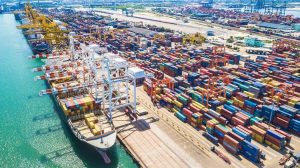
Venezuela’s agriculture industry has been hit by years of regulations and expropriation of land, leading ranchers who depend on selling meat to scale back cattle breeding and shift to dairy.
Ranching across Venezuela’s sprawling plains boasted 2.5 million head of cattle as little as four years ago, but has dwindled to 1.7 million as rearing costs soared, producers said. Fewer cattle are being slaughtered because high inflation has hit demand for beef, they added.
Though President Nicolas Maduro’s government loosened business regulations in 2019, the measure has not permitted the complete reactivation of key areas for the South American country’s battered economy.
However, some ranchers can now sell milk for dollars, helping to offset the devaluation of Venezuela’s bolivar.
“Milk is what provides us the opportunity to have petty cash on the farm … that keeps us operating,” said Jose Labrador, president of the Barinas rural producers association, adding that he and his fellow ranchers faced a grave crisis.
A liter of milk can go for 30 to 60 cents, Labrador said.
Use of the dollar has helped producers survive, they said, while making smuggling cattle to neighboring Colombia less attractive, Fedenaga said.
Beef production is much slower and takes longer to generate income in a country where annual consumption has dropped to eight kilograms per person from 26 kilos in the 1990s, according to the national federation of ranchers in Venezuela (Fedenaga).
A handful of ranchers have been able to sell beef abroad, with the government pushing exports to Asia and the Middle East.
Milk production in Barinas is around 2 million liters per day, according to producers’ estimates. Milk production figures from before Venezuela’s crisis were unavailable.
Restrictions on new loans have limited producers’ capacity to invest in their farms, causing some to abandon their lands, while others turn to options like producing corn or rearing sheep or pigs alongside cattle, Labrador said.
Ranchers also contend with government measures to limit loan availability and spending in bolivars to control hyperinflation, which have reduced the circulation of local currency.
According to the central bank, inflation in Venezuela hit 686.4% in 2021.
A farm on the outskirts of Barinas state’s capital of the same name produced some 14,000 liters of milk per day before Venezuela’s economic crisis, but now sees output of 9,000 liters due to high production costs.
Only one of the farm’s milking systems is operational after a lack of financing paralyzed the other, which was poised to add 8,000 liters to daily production, Labrador said.
Attacks by criminal gangs who burn farms, destroy equipment and kill livestock, as well as damaging nearby forests, has also disrupted output, producers added.
The gangs aim to drive ranchers from their lands, before selling them to third parties, producers told Reuters. Videos provided by ranchers and on social media show cattle being abused, or confined without food until they die.




















